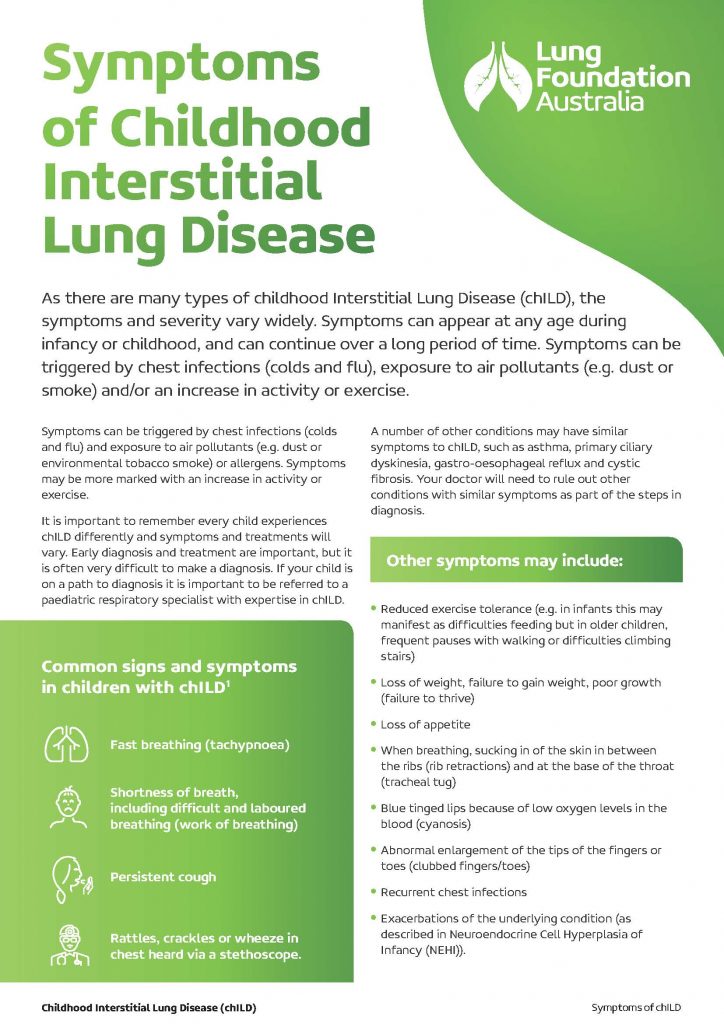Childhood Interstitial Lung Disease (chILD) presents with a wide range of symptoms that can vary in severity and onset, making early recognition and diagnosis crucial. This fact sheet is an essential guide for parents, caregivers, and healthcare professionals, detailing the symptoms of chILD, potential triggers, and warning signs of disease progression. Symptoms may develop during infancy or childhood and can be exacerbated by chest infections, environmental pollutants, or physical activity. Common symptoms include persistent cough, shortness of breath, rapid breathing, recurrent chest infections, and difficulty gaining weight. In more severe cases, children may exhibit blue-tinged lips (cyanosis), clubbed fingers, or increased respiratory distress, requiring medical intervention.
chILD refers to a group of rare lung disorders that impair oxygen absorption in the lungs, leading to breathing difficulties and reduced oxygen supply to other organs. Early diagnosis is crucial, as symptoms can vary in severity and worsen over time. It’s important to know each child experiences chILD differently. Some cases are mild with symptoms that slowly improve over time without treatment. In other cases, symptoms can remain severe and may lead to other complications and more complex treatments.
The fact sheet highlights the importance of monitoring respiratory rate and oxygen levels, helping caregivers recognise when a child’s condition is worsening. It provides practical advice on tracking symptoms, consulting a paediatric respiratory specialist, and understanding the severity classification of chILD, which ranges from mild cases with minimal symptoms to severe forms requiring oxygen therapy or ventilation support. It also emphasizes the need to differentiate chILD from other respiratory conditions such as asthma, cystic fibrosis, and reflux-related breathing issues, ensuring an accurate diagnosis.
This resource offers guidance on creating an emergency action plan, recognizing critical symptoms like extreme breathlessness, lethargy, or a drop in oxygen saturation, and seeking urgent medical care when necessary. Parents are encouraged to work closely with healthcare teams to develop a care strategy tailored to their child’s specific needs. Additionally, the fact sheet connects families with Lung Foundation Australia for further support.
Was this page helpful?
Good job! Please give your positive feedback
How could we improve this post? Please Help us.
